A student was given a sample of colourless solution containing three cations and was asked to identify the cations. Student carried out a series of reactions as given below.
White precipitate 'A' is not soluble in:
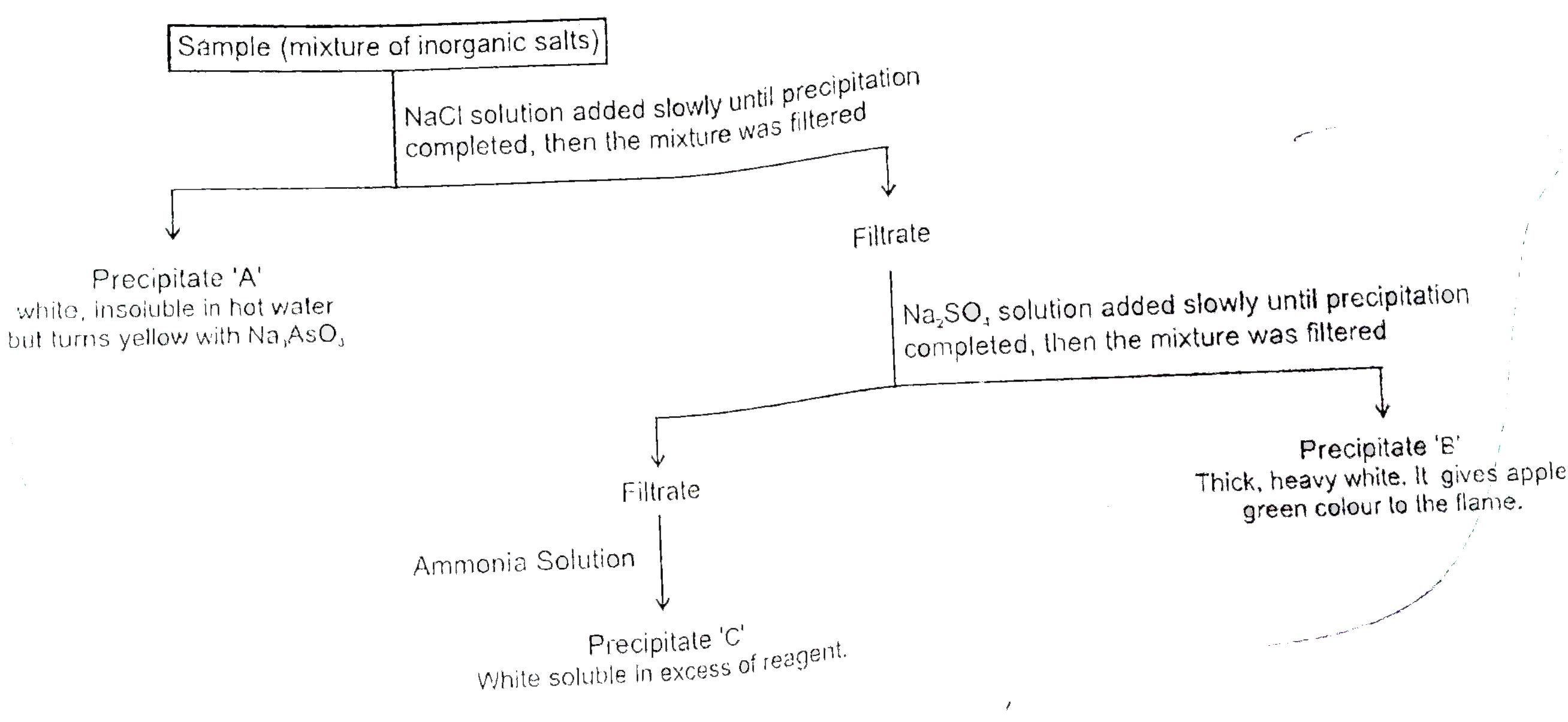
NH3
2MHCl
KCN
Na2S2O3
The correct Answer is:B
Step by step video & image solution for A student was given a sample of colourless solution containing three cations and was asked to identify the cations. Student carried out a series of reactions as given below. White precipitate 'A' is not soluble in: by Chemistry experts to help you in doubts & scoring excellent marks in Class 12 exams.
Updated on:21/07/2023Similar Questions
A student was given a sample of colourless solution containing three cations and was asked to identify the cations. Student carried out a series of reactions as given below.
Precipitates 'A','B' and 'C' are respectively:
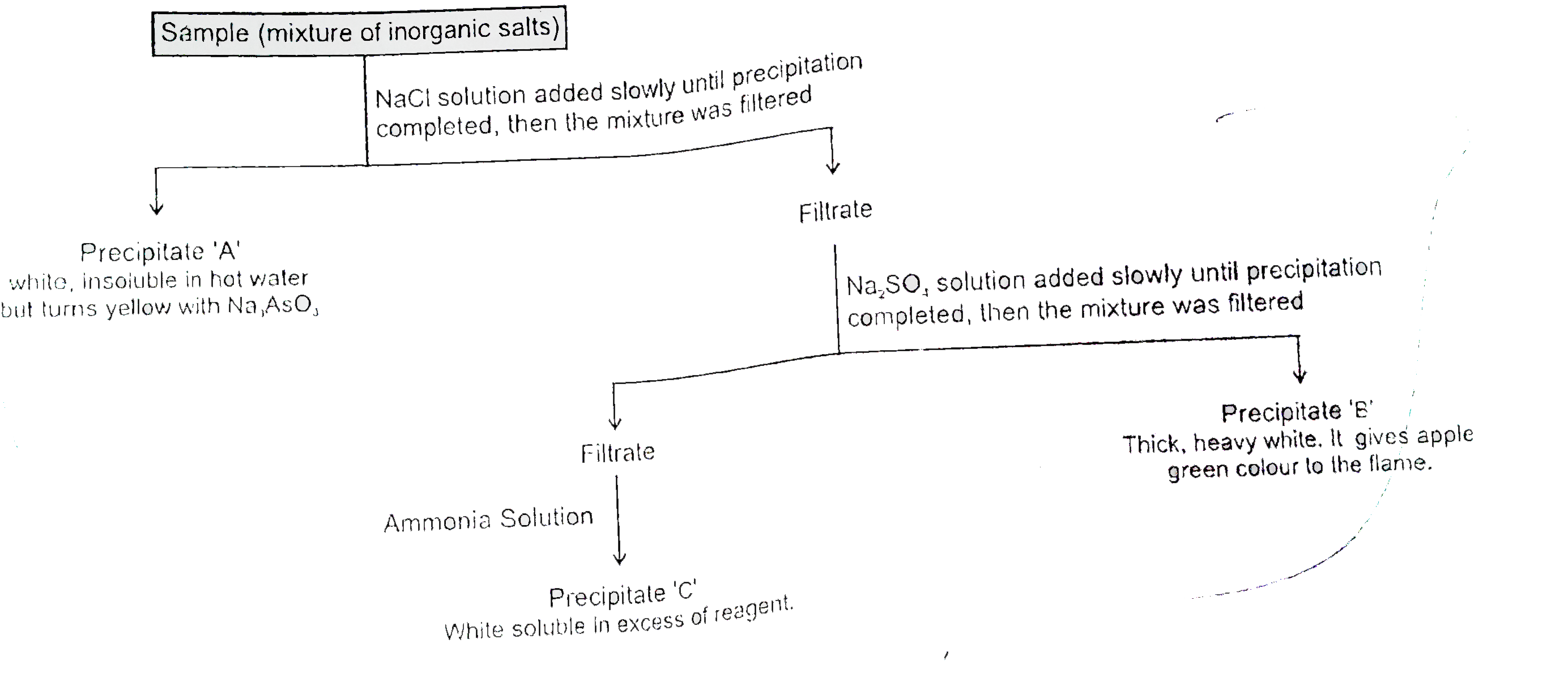
View SolutionStudy the given reaction and identify the process which is carried out.

View SolutionIdentify the cation in each of the following case
Sodium hydroxide solution when added to solution C gives bluish white precipitate which is insoluble in excess.
View SolutionIdentify the cation in each of the following case
Ammonium hydroxide solution when added to the solution B gives white precipitate which dissolves in excess
View SolutionIn a class of 40 students, the marks obtained (out of 50) are as given below:

Draw a histogram to represent the given data.
View SolutionA white substance (A) reacts with dilute H2SO4 to produce a colourless suffocating gas (B) and a colourless solution (C )/ The reaction of gas (B) with potassium iodate and starch solution produce a blue colour solution. Aqueous Solution of (A) gives a white precipitate with BaCl2 solution which is soluble in dilute HCl. Addition of aqueous NH3 or NaOH to (C ) produced first a precipitate which dissolves in excess of the respective reagent to poduced a clear solution. Similarly addition of excess of potassium ferrocyanide to (C ) produced a precipitate (D) which also dissolves in aqeous NaOH giving a clear solution. Identify (A),(B),(C ) and (D ). Write the equation of the reactions involved.
View SolutionAn aqueous solution of metal ion MI reacts separately with reagents Q and R in excess to give tetrahedral and square planar complexes, respectively An aqueous solution of another metal ion M2 always forms tetrahedral complexs with theses reagents. Aqueous solution of M2 on reaction with reagent S gives white precipitate which dissolves in excess of S The reactions are summarised in the scheme given below: SCHEME :
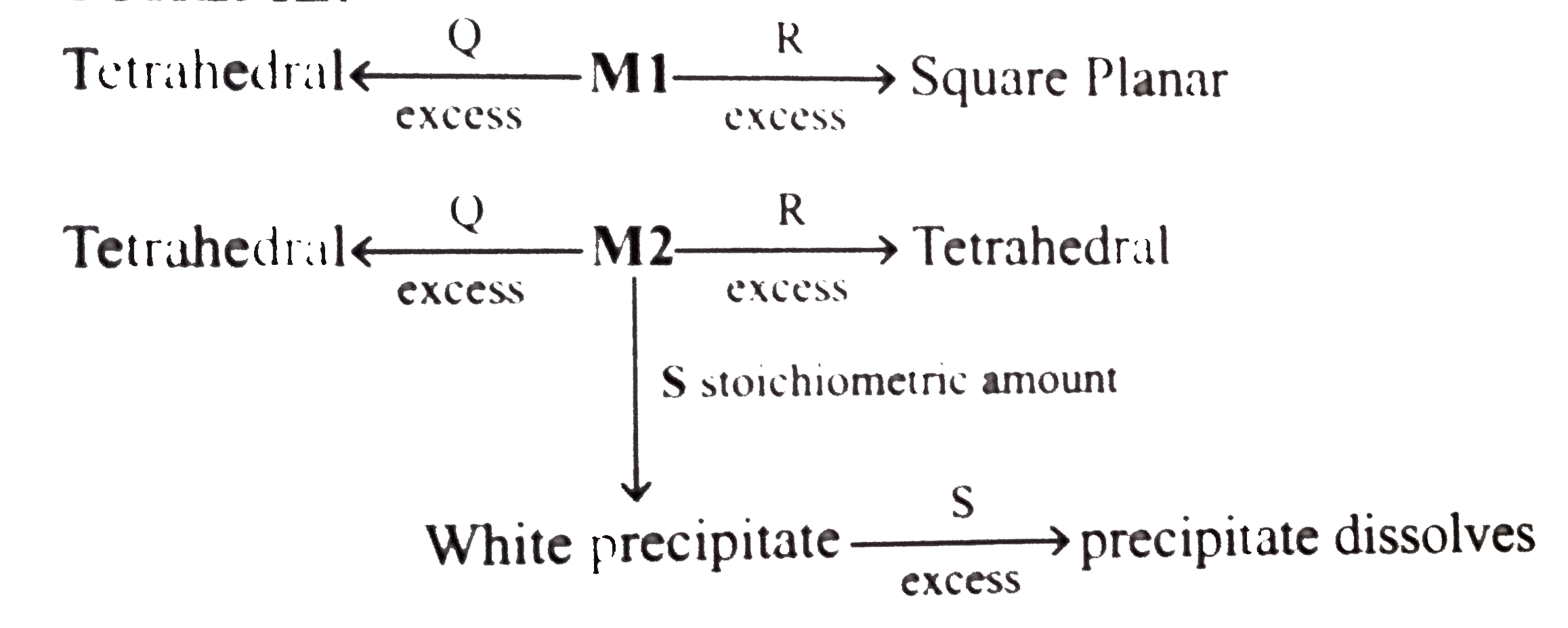
What is M2
View SolutionAn aqueous solution of metal ion MI reacts separately with reagents Q and R in excess to give tetrahedral and square planar complexes, respectively An aqueous solution of another metal ion M2 always forms tetrahedral complexs with theses reagents. Aqueous solution of M2 on reaction with reagent S gives white precipitate which dissolves in excess of S The reactions are summarised in the scheme given below: SCHEME :
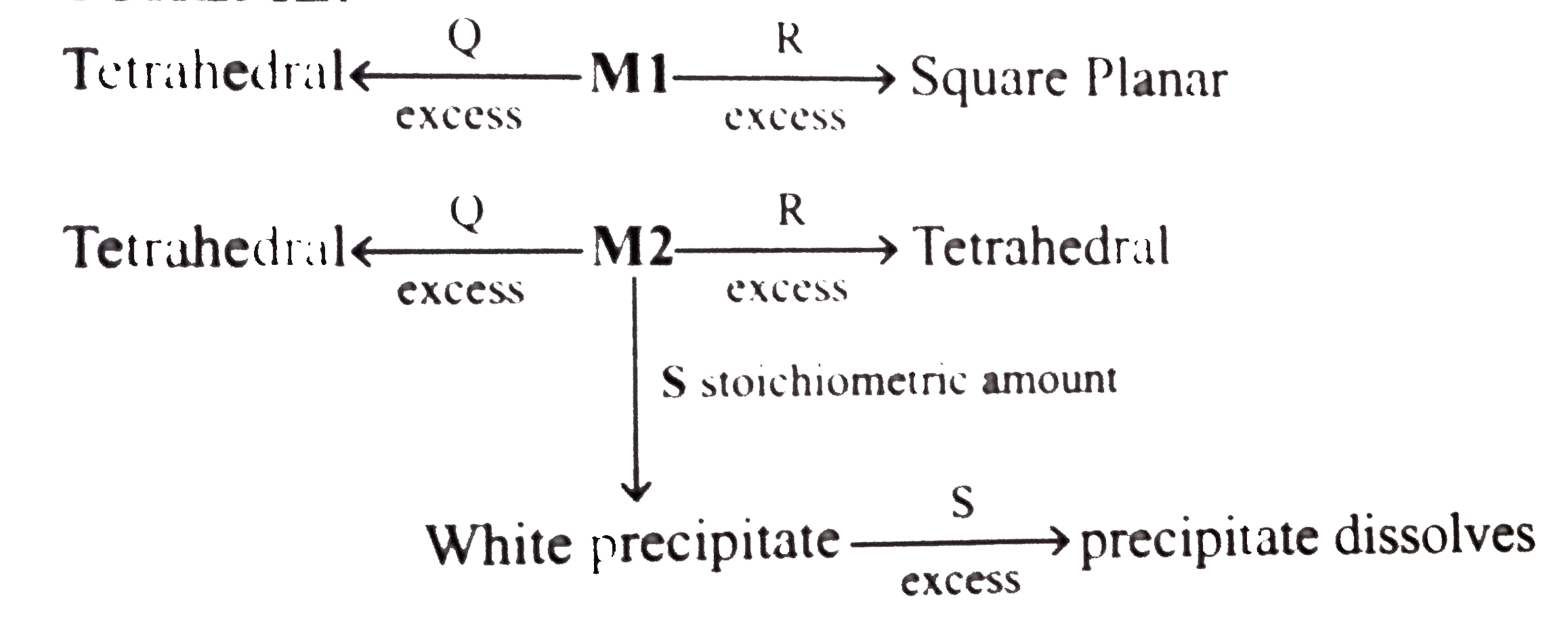
What is S?
View SolutionA student was given a sample of two tissues. He observes the tissues under the microscope and draws their figures (1 and 2) as shown below .
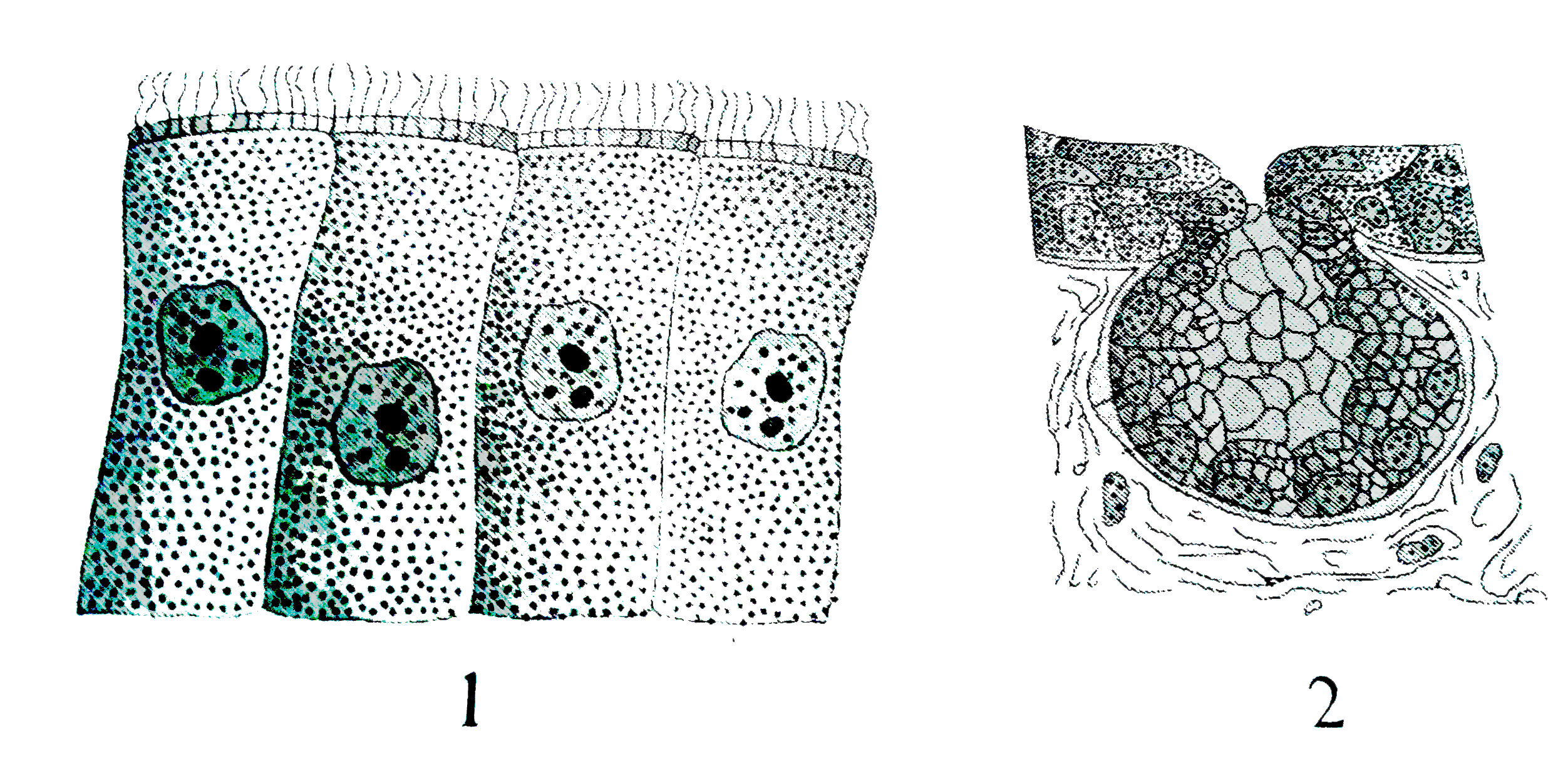
Identify the tissues (1 and 2)
View SolutionWhen a white crystalline compound X is heated with K2Cr2O7 and concentrated H2SO4 a reddish brown gas A is evolved. On passing A into caustic soda solution, a yellow coloured solution of B is obtained. Neutralizing the solution B with acetic acid and on subsequent addition of lead acetate, a yellow precipitate C is obtained. When X is heated with NaOH solution, a colourless gas is evolved and on passing this gas into K2HgI4 solution, a reddish brown precipitate D is formed. Identify A, B, C, D and X. Write the equations of reactions involved.
View Solution
